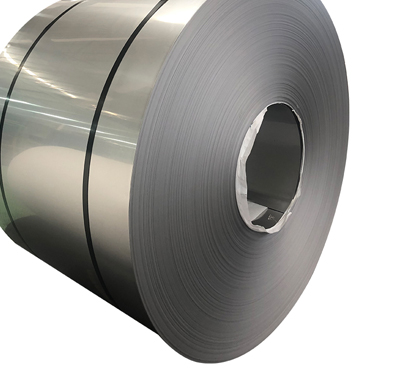
317 stainless steel is a versatile material that has been a staple in manufacturing and construction for decades. But there are many kinds of stainless steel, each with its own properties and applications. Knowing the types of stainless steel available can help you make the right choice for your project. One of these types is 317 stainless steel, also known as UNS S31700 or AISI 317.
317 stainless steel is a type of molybdenum-containing stainless steel. It is used for chemical equipment requiring high corrosion resistance, such as chemical ships and chemical products.
What are the standards and models of 317 stainless steel?
Standard: AISI, ASTM
Model: 317
UNS number: S31700
Forging No.: ASTM A276 S31700
Casting number: AME SA351 CG8M
What are the heat treatment specifications and metallographic structure of 317 stainless steel?
Heat treatment specification: solid solution 1010~1150°C rapid cooling.
Metallographic structure: The structure is characterized by austenitic type.
What are the characteristics of 317 stainless steel?
317 Stainless Steel is a molybdenum-containing austenitic stainless steel that offers greatly improved resistance to chemical attack compared to traditional chromium-nickel austenitic stainless steels such as 304 and 316. Alloy 317 also exhibits higher creep strength, stress to fracture, and tensile strength at higher temperatures than conventional stainless steels. In addition, the higher the content of these elements, the higher the corrosion resistance in environments containing chlorides or other corrosive chemicals. 317 stainless steel has the following characteristics:
- Austenitic basic steel, the most widely used;
- Excellent corrosion resistance and heat resistance;
- Excellent low temperature strength and mechanical properties;
Compared with 316L stainless steel plate, 317 stainless steel plate has good seawater resistance and SCC resistance.
What is the chemical composition of 317 stainless steel?
317 steel chemical composition :
Carbon C:≤0.08
Manganese Mn:≤2.00
Silicon Si:≤1.00
Chromium Cr:18.0~20.0
Nickel Ni②:11.0~15.0
Phosphorus P:≤0.045
Sulfur S:≤0.03
Molybdenum Mo:3.0~4.0
Nitrogen N:≤0.10
①Unless otherwise specified, the single value is the highest value; ②When used in some pipe-making processes, the nickel content of some types of austenitic stainless steel must be slightly higher than the value shown in the table; ③Arbitrary; ④ The maximum Ta content is 0.10%; ⑤ The maximum content is 0.75%; ⑥ The maximum content is 0.70%
What are the mechanical properties of 317 stainless steel?
Tensile strength σb (MPa): ≥520
Conditional yield strength σ0.2(MPa):≥205
Elongation 85 (%):≥40
Reduction of area ψ(%):≥60
Hardness: ≤187HB; ≤90HRB; ≤200HV
How is the corrosion resistance of 317 stainless steel?
While most grades of stainless steel have good corrosion resistance, 317 stainless steel goes a step further, offering a higher level of corrosion resistance. This makes it ideal for applications where there is a risk of exposure to aggressive chemicals or the environment.
The increased resistance level is due to the higher molybdenum content in 317 stainless steel. Molybdenum is a key element in stainless steel formulations because it increases resistance to pitting and crevice corrosion. It also contributes to the overall strength of the alloy.
In addition to its impressive corrosion resistance, 317 stainless steel has other desirable properties. It has good weldability and forming characteristics, making it easy to process. It is also highly ductile, which means it can be cold worked extensively without becoming brittle.
Overall, 317 stainless steel is an excellent choice for applications where corrosion resistance is a critical concern.
What are the advantages and disadvantages of 317 stainless steel?
317 stainless steel is a chromium-nickel-molybdenum austenitic stainless steel with good corrosion resistance. It has a higher nickel content than 316 stainless steel and contains molybdenum, giving it better corrosion resistance in certain chemicals and environments. But 317 stainless steel is more expensive than 316 stainless steel.
In conclusion, 317 stainless steel is a cost-effective choice for a variety of applications. It has excellent corrosion resistance, making it ideal for a range of industries from food processing to oil and gas. Its strength makes it suitable for structural components and outdoor environments, while its low cost makes it widely applicable to many businesses with limited budgets. For these reasons, 317 stainless steel is an excellent choice if you are looking for a reliable material that offers several benefits.
What are the uses of 317 stainless steel?
317 (18Cr-12Ni-3.5Mo) stainless steel has better pitting resistance than 316 steel. 317 stainless steel is used for printing and dyeing equipment materials.
317 stainless steel is a chromium-nickel-molybdenum austenitic stainless steel with good corrosion resistance. Due to its high molybdenum content, it can be used in environments where chlorides are present, such as offshore and marine applications. 317 stainless steel is also a good choice for applications requiring high temperatures, such as heat exchangers and furnaces.
Stainless steel is gaining popularity in manufacturing for its durability and corrosion resistance. While there are many different types of stainless steel, one of the most versatile is 317 stainless steel. This alloy has a range of properties that make it ideal for a variety of industries, including those that require constant exposure to chemicals or high temperatures
317 stainless steel is an austenitic chromium-nickel stainless steel with low carbon content. It is highly corrosion resistant and has higher creep and stress rupture properties than other austenitic stainless steels. 317 is often used in process streams containing chlorides or other corrosive chemicals.
How to maintain 317 stainless steel ?
317 stainless steel is one of the most widely used stainless steel grades. It is commonly used in food processing, chemical processing and pharmaceutical applications. This material is easy to weld and clean, making it a versatile choice for many industries. Here are some tips on how to care for 317 stainless steel:
– Wash with soap and water before use.
– Do not use harsh chemicals or cleaners on stainless steel.
– Dry completely after washing to prevent water spots.
– If your stainless steel is scratched, you can wipe off the scratches with a soft cloth.

